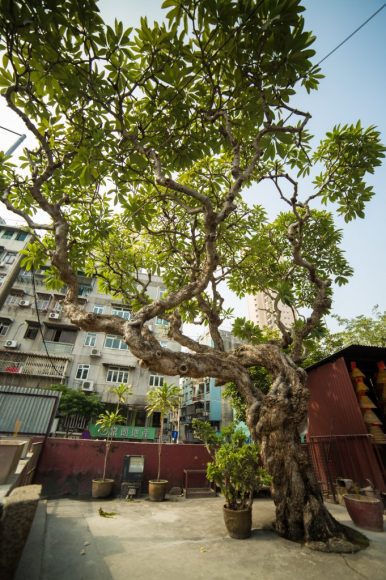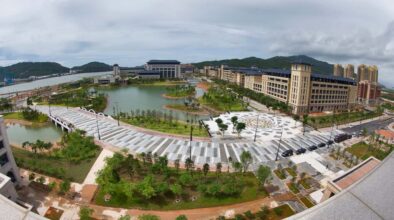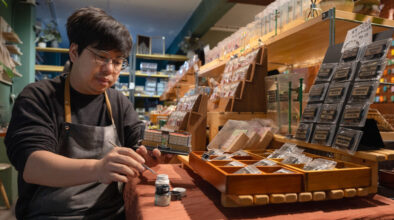Macao is home to an impressive number of old and valuable trees, which have defied the odds to survive in this urban jungle.
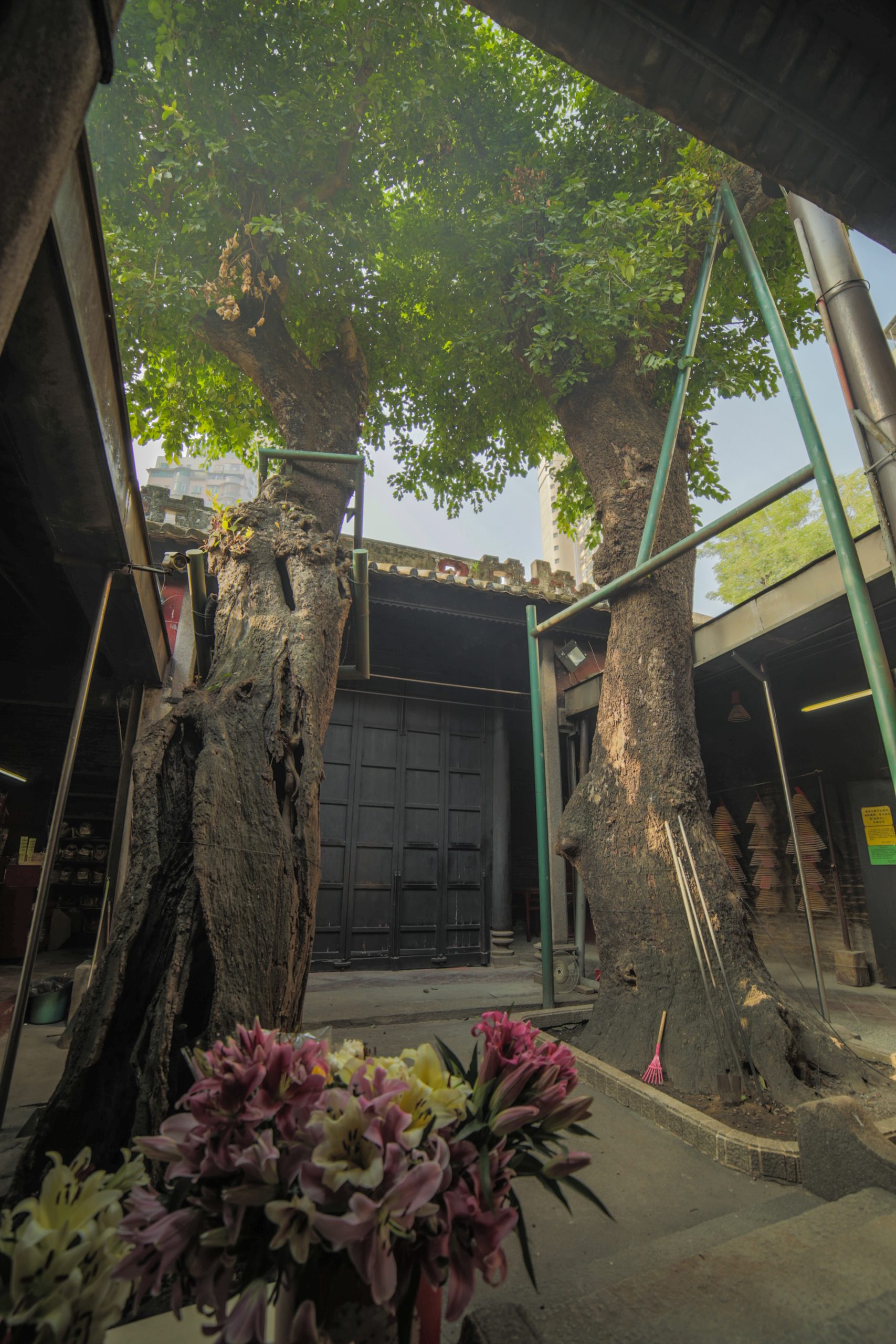
Living in a densely‐populated city like Macao, trees and greenery provide a breath of fresh air in the midst of an often chaotic urban environment. Imagine the busy street of Avenida Horta e Costa without the flourishing ficus trees to divert our attentions from the bustle of daily life, or strolling along Sai Van Lake without the shade of the lush green canopies. Without trees, we would be left living in a lifeless, grey concrete desert.
Trees provide far more than pleasant decoration – they play an important role in our lives, making valuable contributions so quietly that we often take them for granted. The air we breathe is cleaner and more oxygen‐rich, the heat less oppressive, the soil more fertile: our ability to thrive is inextricably linked to the trees and nature around us.
Despite these clear benefits, cities like Macao provide a far from ideal environment for these natural wonders to thrive. Urbanisation increases competition for space, often forcing out trees and green areas in favour of new construction, and while adept at filtering out many pollutants, environmental degradation takes a toll. Natural disasters also hit trees hard: Typhoon Hato damaged or uprooted as many as 10,000 trees.
Fortunately, thanks to their resilient nature and human care, some trees have survived for centuries in the midst of an ever‐changing city. As much a part of the city’s legacy as its unique cultural heritage, the Macao government now honours these silent giants as the “old and valuable trees” of Macao.
Living relics
The Department of Gardens and Green Areas, under Civic and Municipal Affairs Bureau of Macao (IACM), collaborated with experts from South China Botanical Garden to conduct a thorough assessment of Macao’s old trees in 2012, determining their ages based on respective growing speed, growing history, and its physical features such as tree girth, height, and crown width.
The investigation identified 795 old and valuable trees, belonging to 63 species, in both the public and private areas of the city. Around 98 per cent of them fell within the category of Third‐Class Ancient Trees, or trees between 100 and 299 years old. The most common species include longans and camphor trees, as well as mock buddha trees and other ficus.
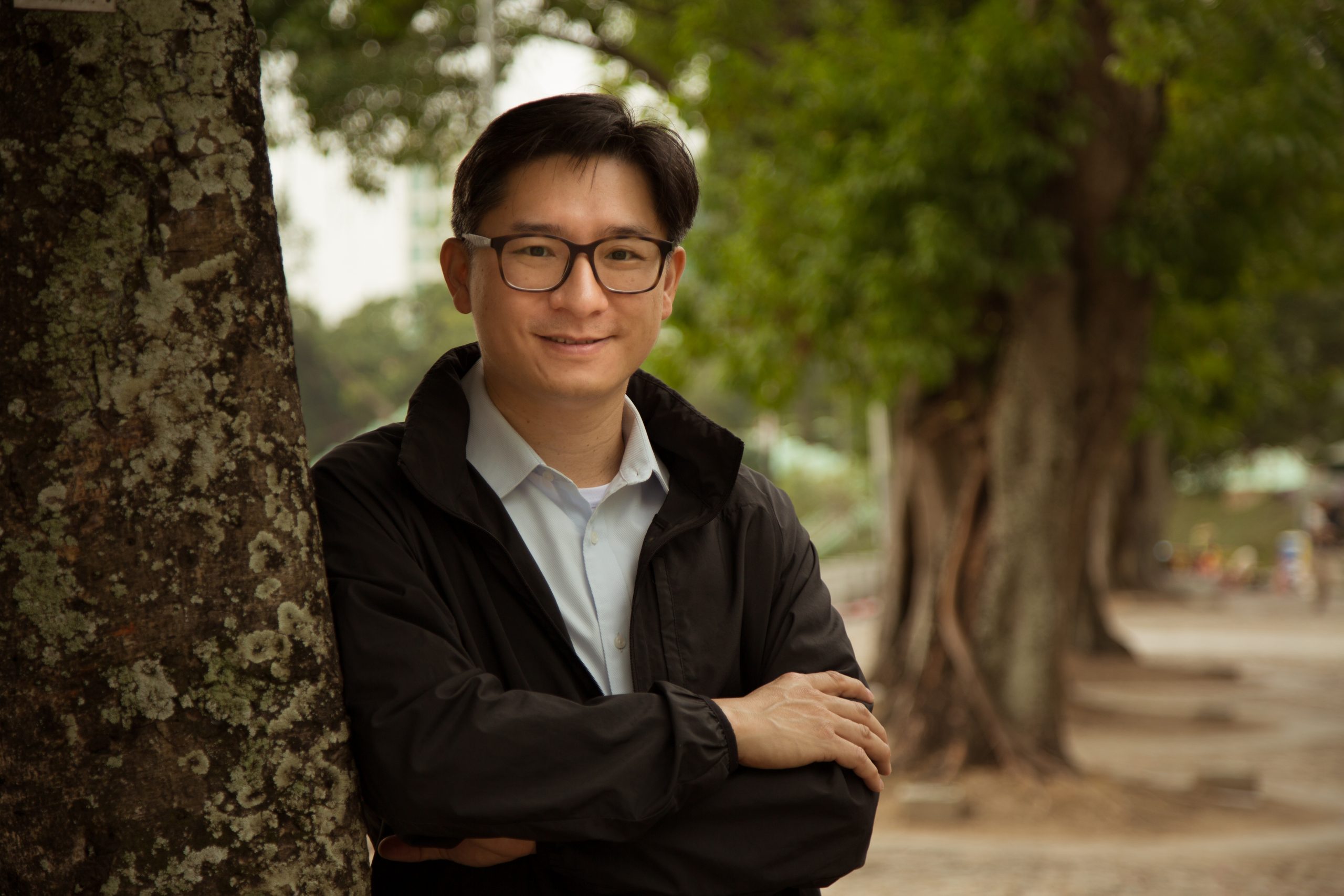
The department turned their research into The Charm of Old Trees, published in March 2013, providing the public an extensive record of the old and valuable trees in Macao. According to the book, while Coloane has the largest number of old trees, many old trees on Macao Peninsula can be found in Guia Hill and Camões Garden, largely due to historical reasons.
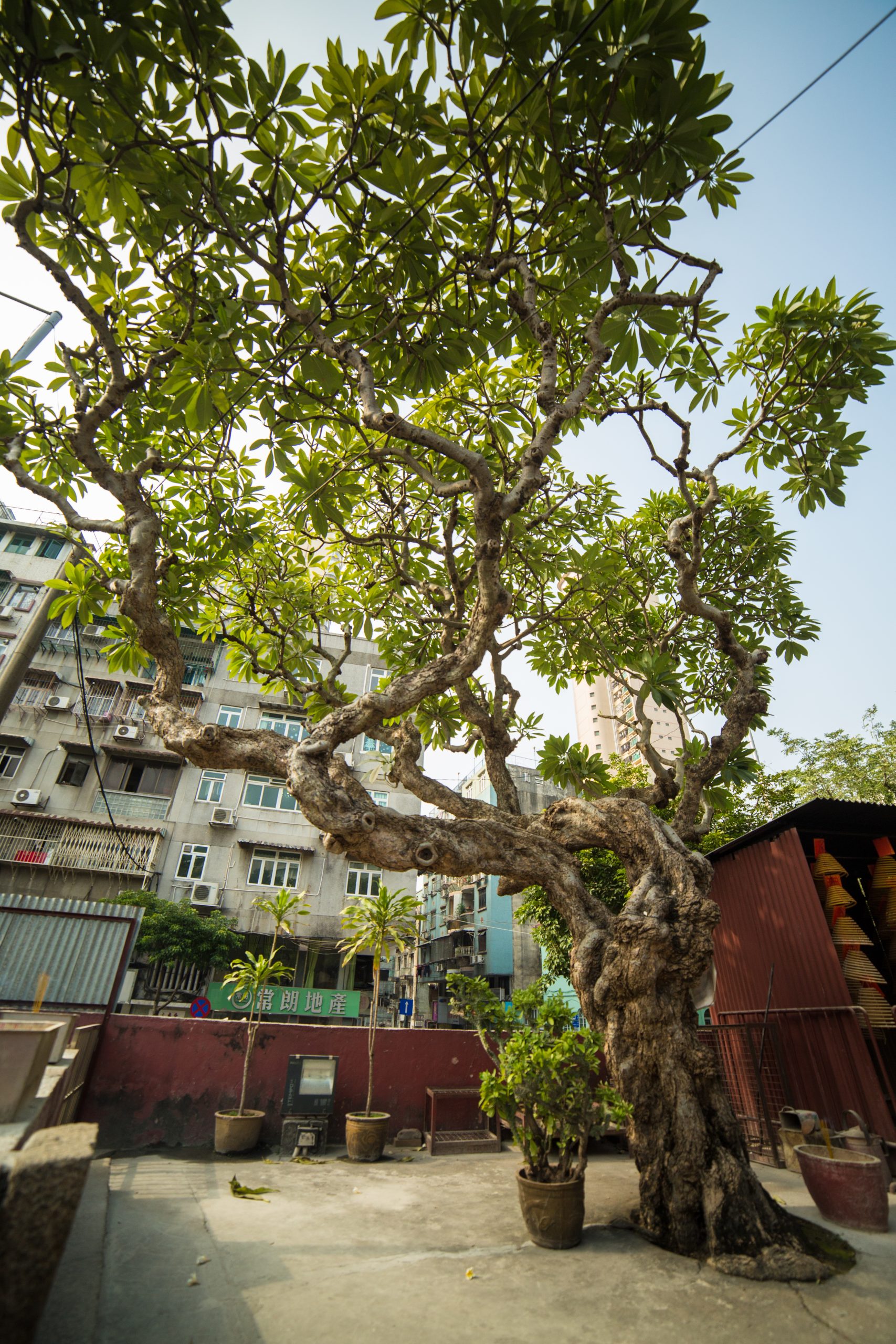
“Take a look at the old photos of Macao, and you will find that Guia Hill used to be quite barren with stunted vegetation. It only began to flourish when the Portuguese government started greening the area in the 19th century,” said Ung Sio Wai, chief of the Division for the Greening of the City under Department of Gardens and Green Areas.
Camões Garden, he explained, was originally a luxurious suite with garden leased to the British East India Company in the late 18th century. The company turned it into a nursery for Southeast Asian plants to be transported to Kew Gardens in England. After the Portuguese government purchased the property in 1885, the garden was opened to the public.
Religious sites, such as temples, churches and cemeteries, have nurtured a number of old trees with religious significance. Notable examples include the towering Michelia Champaca and much smaller Mexican frangipani, two flowering trees commonly planted in Buddhist temple gardens. Even busy streets like Avenida da República are home to a great number of impressive mock buddha trees.
Fighting against the odds
Since 2004, IACM has employed the Trees Management and Maintenance System to collect data on all trees in Macao. According to Ung, as of this year, the system contains data on 25,000 trees in the city.
While old trees hold special value, Ung stressed: “We take care of all the trees, regardless of their size and age.”
Protection work takes a variety of forms: pruning helps to foster new growth, and regular check‐ups identify rot or pest damage early, increasing the opportunity for intervention. The installation of drainage holes and snorkelling tubes enables better absorption of rain water and oxygen, which can be challenging for city trees.
However, the decline in the number of old and valuable trees illustrates the difficulty of retaining the aging giants. In October 2016, the government announced an updated list of 558 old and valuable trees in the public area and 170 in private areas – an implied loss of 67 trees since the publication of The Charm of Old Trees in 2013.
Ten months later, Typhoon Hato damaged 40 old trees at different levels, 9 of which ultimately had to be removed.
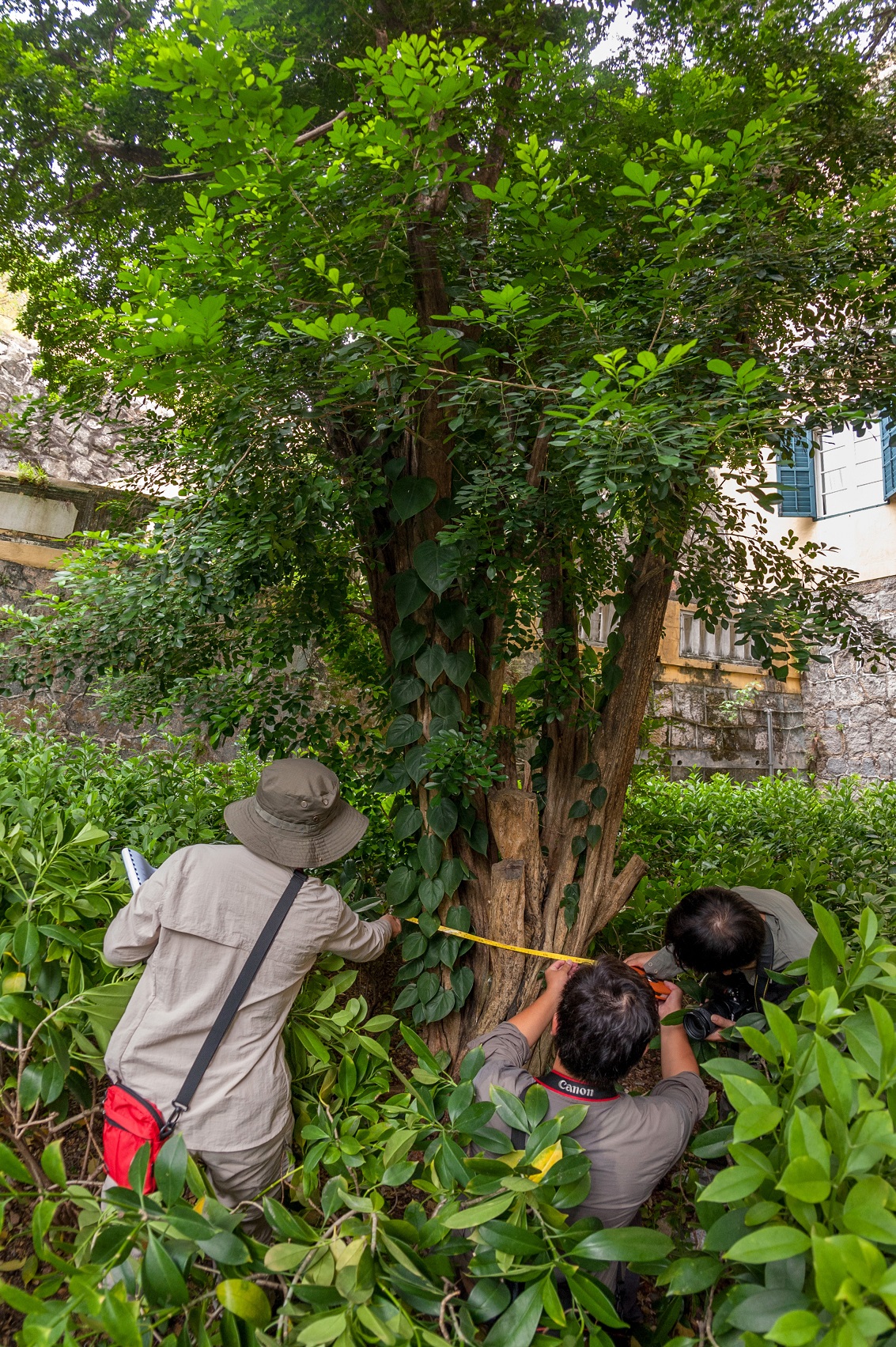
Ung attributed the decline to more than just an unusually destructive natural disaster: “We have to understand that trees are living beings that go through the natural process of life and death. The inadequate growing conditions in the urban areas also weaken their health, making them more vulnerable to diseases and fungal infections.”
He highlighted the devastating impact of brown root rot (BRR) disease, often referred to as “tree cancer,” which causes the removal of about 250 trees on Guia Hill each year. It is also responsible
for the death of some beloved old trees in Macao, such as the Batavia cinnamom in Sun Yat Sen Memorial House and the two lofty figs, famous for their interlocking branches, in the Buddhist temple Kun Iam Tong.
“BRR disease is usually spread through root contact, resulting in rapid health and structural deterioration of trees,” he explained. “As tree roots grow deep into the earth, it is very difficult for the medicine to reach this hidden part of the trees to tackle the disease.”
Prevalent in tropical and subtropical regions around the world, the deadly fungal infection has no known cure. Since 2011, the department have been working with Guangzhou Research Institute of Landscape Gardening to combat the disease, and have identified certain types of medicines that show positive effect in laboratory tests.
A heritage to be preserved
Among the oldest living things on Earth, trees reflect the world around them with each passing year recorded in their rings, their size and shape, as much a product of man as of nature. In cities like Macao, trees become a living piece of our history and culture, passed down from one generation to the next.
Many of these precious old trees live side‐by‐side or within historical landmarks and architecture, becoming important tourism resources and cultural symbols in their own right. As such, the old and valuable trees in public areas now enjoy protection under the cultural heritage protection law, which prohibits removal, hewing, relocation, or any other activity that may damage them.
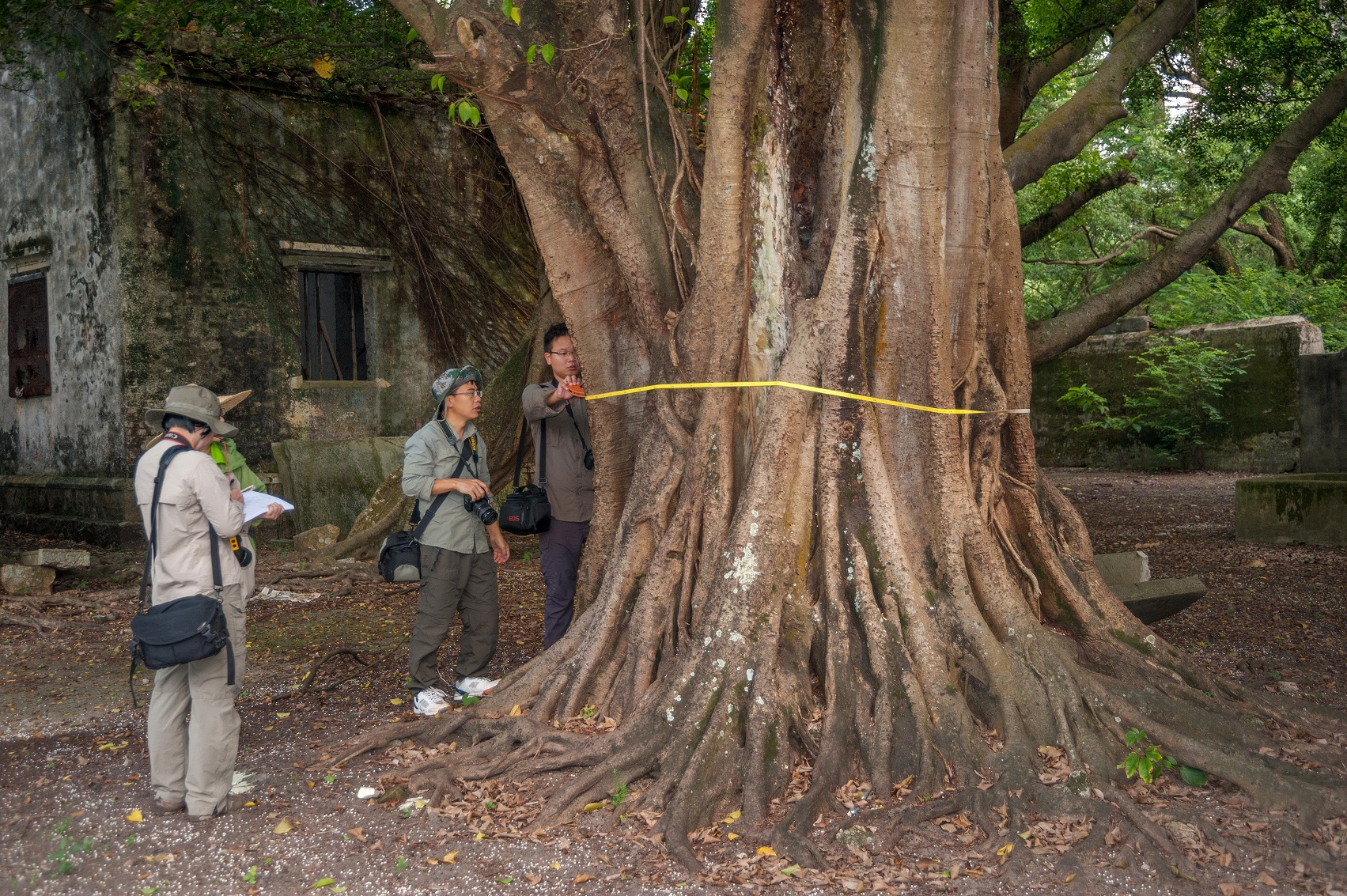
The protection of old trees growing within private areas, however, is a more complicated issue. “For instance, the hill of Ilha Verde is home to many special trees and plants,” Ung said, “but it is also divided by the ownership of individuals and companies. We need a consensus from the respective landowners in order to enter a certain area to check on the plants.
According to Ung, the department is now working closely with the Cultural Affairs Bureau to monitor the growth of old trees in private areas, most of which are historical sites like temples and churches.
“Before we can carry out the maintenance work on an old tree in a historical site, we need careful planning on how to protect the surrounding area,” Ung said. He offered the jambolan plum – a 500 year‐old First‐Class Ancient Tree growing within the small courtyard of Kun Iam Ancient Temple as an example.
“We have helped trim the tree in the temple, but a lot of protective measures needed to be taken, because the branches might fall on the roofs and cause damage,” he said. “In this case, advice from Cultural Affairs Bureau would be invaluable.”
Tending to the future
The incredible contribution of trees – to our lives, history, and environment – make their loss all the more disheartening. Deforestation driven by agriculture, logging operations and unintentional factors such as wildfires is clearing Earth’s forests on a massive scale.

Although forests still cover about 30 per cent of land, huge swaths are lost each year with 200 square kilometres – more than six times the size of Macao – disappearing every day. The world’s rain forests, highly diverse ecosystems responsible for producing 40 per cent of oxygen on the planet, could disappear completely in a hundred years at the current rate of deforestation.
While it’s hard to tell exactly how many trees there are in Macao, with what is left of the green hills in Coloane and some parts of Taipa, the city has maintained a green area of more than 800 hectares since 2011, according to the Report on the State of the Environment of Macao 2016.
However, the report also points out that the maintenance of the ecological zones around the city faces greater challenges with the operation of large‐scale development projects in areas such as the Cotai Reclamation Zone.
On a global level, one can make a difference in the fight to save forest by making informed daily choices, such as eating sustainable food and choosing recycled or certified sustainable wood products. Joe Chan, chairman of Macau Green Student Union, offered actions to protect the environment on the local level: on harmful emissions which, Chan noted, ”can block the small holes (stomata) on the leaves, through which gases pass in and out.”
Some challenges facing our environment exist at a scale too great to comprehend, and yet our actions – whether walking to work or reusing products or planting native species – shape the world we live in. Caring for the old trees of Macao, recognising their inherent value and important place in the community, shapes the city we call home and ensures that future generations will know a green Macao.
